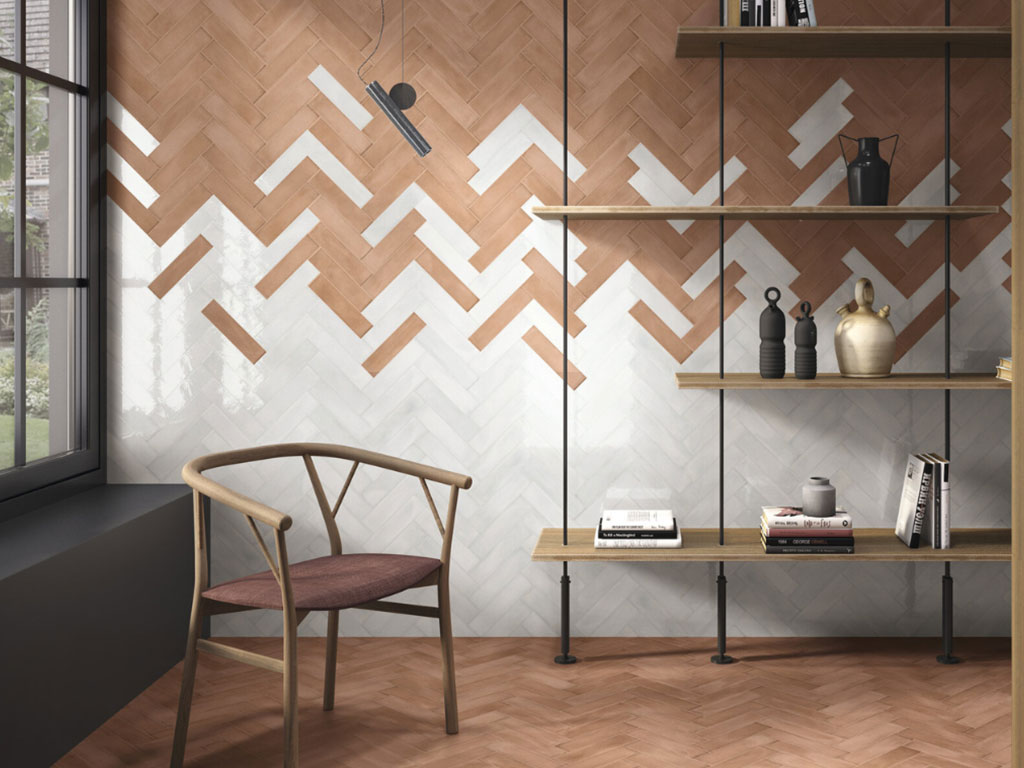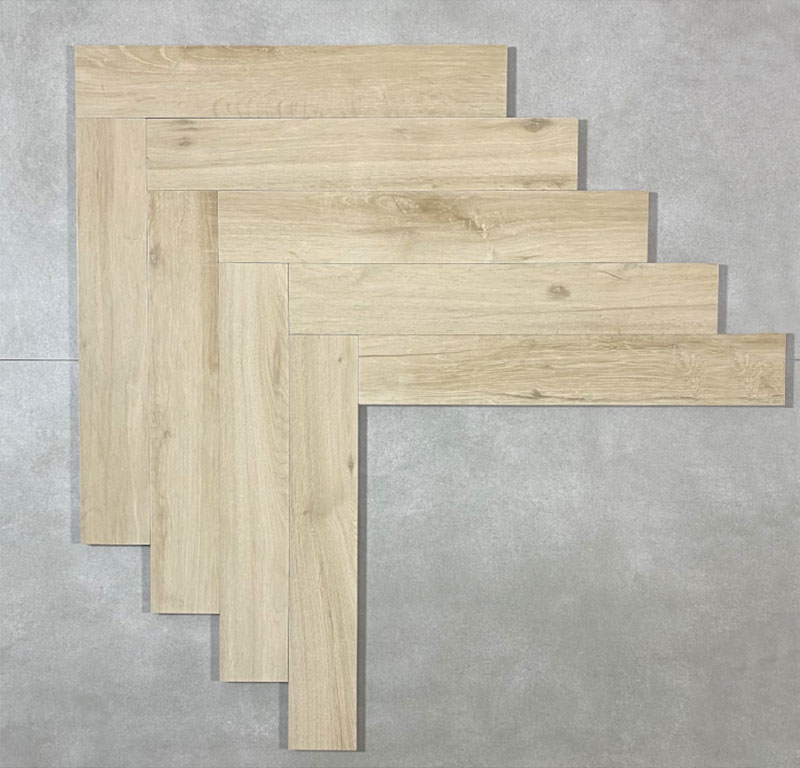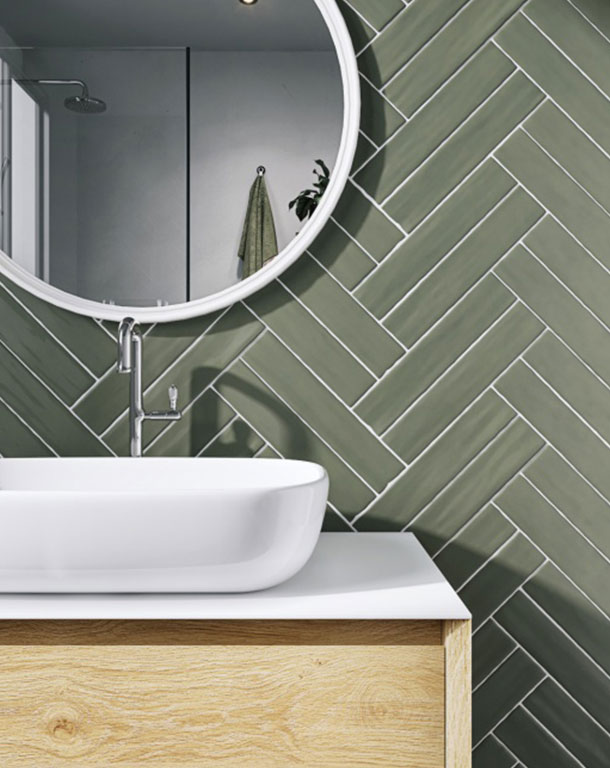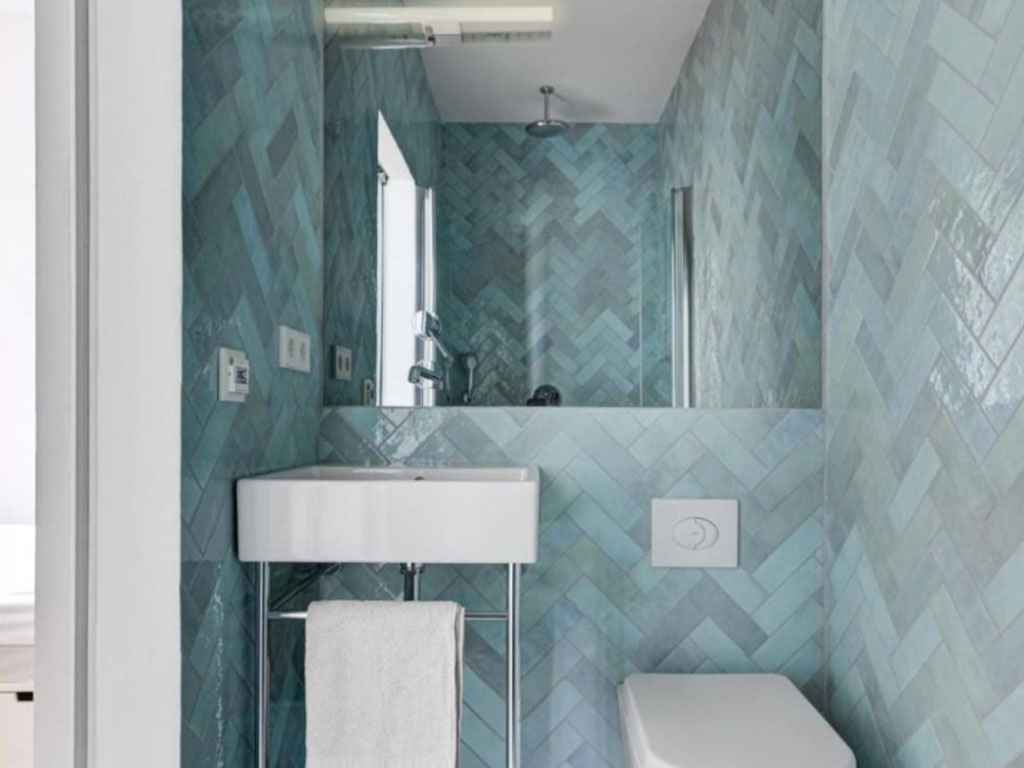Herringbone tiles: A classic laying pattern!
Everyone knows them, the famous herringbone tiles, be it at grandma's or in a highly luxurious apartment. These tiles are suitable for any home and any style due to their timeless elegance. In this blog post, we will explain in detail which herringbone tiles are best suited for your floor, how to lay them and what advantages they offer.

What are herringbone tiles?
Herringbone tiles are a form of floor or wall design in which tiles are arranged in an angled pattern that resembles the skeleton of a fish. This pattern is visually appealing and versatile, as it can be used in both classic and modern interiors.

Herringbone tile materials
Ceramic tiles: These are particularly popular due to their durability and ease of maintenance. With a variety of colors and patterns, these tiles offer a versatile choice for your living style.
Porcelain tiles: Similar to ceramic, but even harder and more water-resistant. They are ideal for high-traffic areas.
Natural stone tiles: For a natural look, you can opt for marble, granite or slate. These tiles are unique in their grain and coloring.
Wood-effect herringbone floor tiles: These tiles are a great alternative to real wood as they offer the warm look of wood but are more moisture resistant.
Colors and patterns
The choice of color for your herringbone tiles should match your personal taste and the color palette of your room. Neutral tones such as grey, beige and white visually expand the room and are easy to combine with other colors. For a bolder look, you can also choose darker or more vibrant colors such as blue or terracotta. In particular, these bolder colors could create a very nice corner on your kitchen wall.
Advantages of herringbone tiles

The herringbone pattern is visually appealing and adds a dimension of movement and depth to any room design.
These tiles go well with a variety of decorative styles, from traditional to modern.
Herringbone tiles can increase the value of your property as they are seen as a high-quality floor covering.
Most of the materials used for herringbone tiles are durable and easy to clean
Planning and installation
Before laying herringbone tiles, it is important to measure the room accurately and plan a layout. This will help you to accurately determine the amount of tiles required and minimize wastage. It is also advisable to consult a professional to ensure that the substrate is suitable.
Laying
Laying herringbone tiles can be complex, so we recommend using an experienced craftsman. The pattern must be carefully planned and each tile precisely cut and laid to achieve the desired end result.

Maintenance and care
The care of your herringbone tiles depends on the material. Ceramic and porcelain tiles are the easiest to maintain; they only require regular sweeping and mopping with a mild detergent. On the other hand, natural stone tiles should be sealed regularly to protect them from stains and damage.
Herringbone tiles - Attractive solution for floor coverings!
Herringbone tiles are an attractive and practical flooring solution that can add style and character to your space. With the right planning and installation, these tiles will be a long-term investment that brings beauty and functionality to your home.

Comments
No comment at this time!
Leave your comment